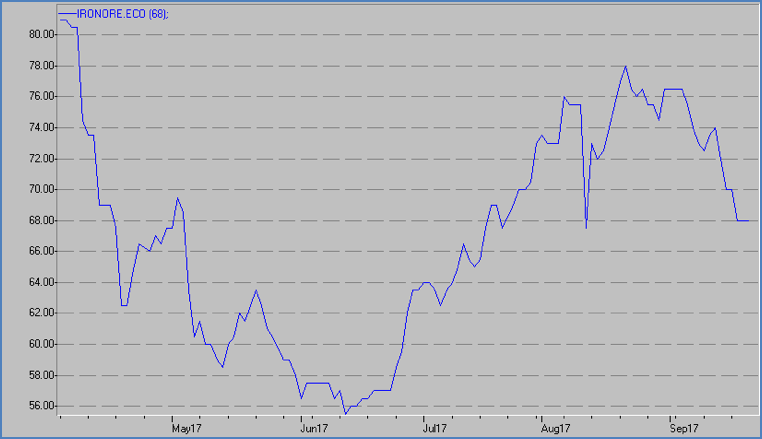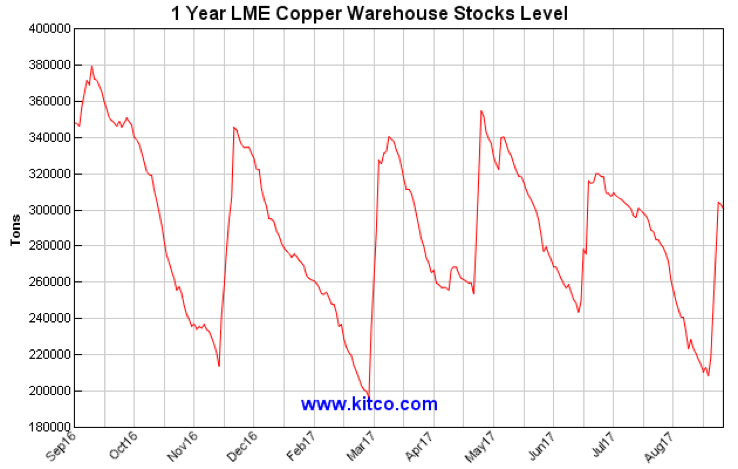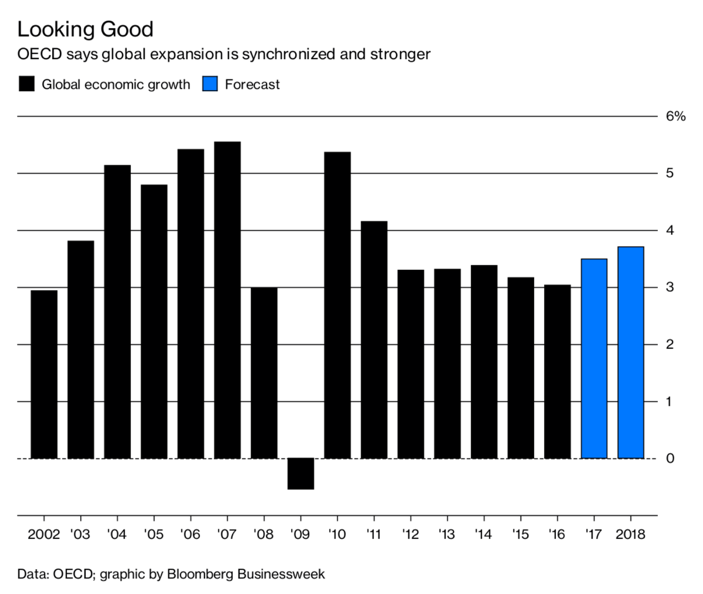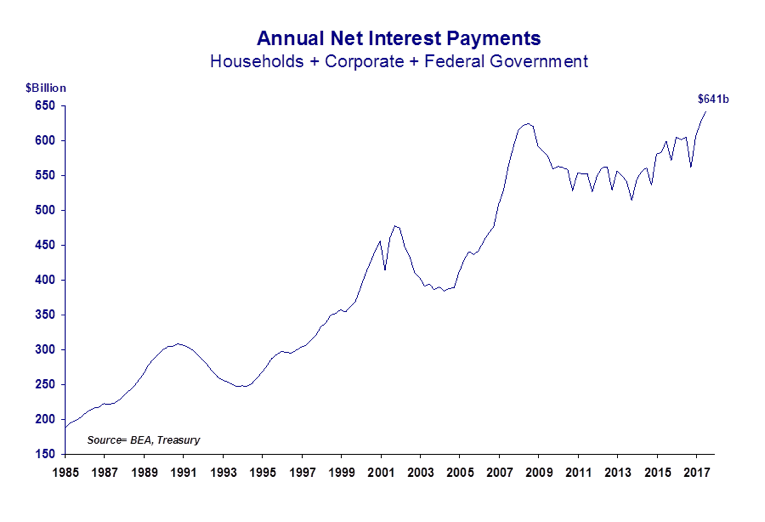Given recent headlines and speculation with respect to commodity prices, I thought it worthwhile to outline my views on the near-term picture. Overall, I remain very optimistic with respect to metals prices.
I remain bullish on commodity prices, although I believe over the very near-term we’re likely to see the potential for further retracement due to profit-taking, perhaps until the Chinese Communist Party Congress next month. This should provide the market with more direction.
Remember, we’ve seen strong gains right across the board in the commodity space over the course of this year, making some sort of consolidation inevitable. Prices almost universally had run too far, too fast. Nevertheless, I see the latest pull-back as a consolidation, rather than the beginning of a more dramatic decline. I’ve attached a link below to an interview I gave to Bloomberg TV in Hong Kong on Wednesday.
We’ve seen strong gains in many of the traditional industrial metals like copper, zinc, nickel and iron ore – but we’ve seen subsequent pull-backs in the prices of these metals over recent weeks, as markets pause for breath. We’ve also seen LME inventory increases for some of these metals, particularly copper.
Iron ore is a good example. There’s been ongoing volatility in price, but it’s fair to say that its price performance has exceeded all expectations over recent years. The latest price retreat is just the latest phase in this cycle of volatility, which is likely to see prices subsequently rebound over the coming months.
Iron ore use in the world’s biggest consumer, China, remains robust despite authorities’ closure of independent, lower-quality steel producers. Demand at the premium end of the steel industry has increased, as the Chinese steel industry continue to evolve. I’ve attached a link below to an interview I gave to ABC Radio on Wednesday related to the iron ore price outlook.
http://www.abc.net.au/news/rural/programs/wa-country-hour/past-programs/
Graphic of Recent Iron Ore Price Movements

With respect to inventory levels, the graphic below is particularly interesting, as it shows the volatility in copper inventories on the LME. In amongst the market gyrations as higher prices flush out more stocks, the broader trend is weakening.

What’s also interesting is that whilst some commodities have been consolidating, other more obscure metals like vanadium, tungsten and various rare earths like neodymium, have joined the price party. The common denominator amongst these metals is that they are predominantly produced in China and they have all been hit hard by Beijing’s recent environmental crackdown. Chinese premier Li Keqiang pledged at the annual National People’s Congress in March to make “our skies blue again”.
In my view, this is symptomatic of a more general supply-side problem spreading across the entire global industrial metals spectrum.
So let me briefly outline my bullish synopsis of commodity markets
Global Economy
The global economy is getting stronger and will grow at the fastest pace since 2011 this year, according to the Organisation for Economic Cooperation and Development (OECD). Expansion will accelerate next year, with the biggest economies all contributing, the OECD says in its Interim Economic Outlook.

Trump
If President Trump can finally get some traction on the policy front, we might see some realisation of his proposed infrastructure renewal spending plans, which would deliver the boost to commodity demand that was anticipated in the wake of his election a year ago.
Communist Party Congress
The 19th National Congress of the Communist Party of China will open on 18th October. Markets will be closely watching events to ascertain the administration’s growth outlook and likely measures to sustain it.
Silk Road Trade Route
China’s plan is to build a vast network of new trade routes across the globe, incorporating multiple high-speed rail networks to penetrate Europe, massive ports across Asia and Africa and a series of free-trade zones. China is going to spend up to a trillion dollars on infrastructure projects and hopes to bind more than 65 countries and two-thirds of the world’s population to its economy. It’s a massive global development undertaking that will require enormous commodity usage.
Electric Vehicles
Markets are looking ahead as to how commodities will be positively impacted by the enormous demand boost coming from the burgeoning electric vehicle (EV) revolution.
Miners’ Discipline
As commodity demand has recovered and prices have risen, the world’s major miners have been happy to focus on balance sheet discipline – getting their financial house in order and paying down debt – rather than developing/acquiring new projects. Many of the projects they mothballed during the downturn have remained shuttered. These factors have so far restricted the supply of new commodities coming to market and contributed to stronger commodity prices.
Sovereign Risk
Volatility seems to be increasing each and every year, with political instability and governments moving the goalposts presenting major challenges to miners wanting to develop new projects, helping to restrict flow of new commodity supply to markets. Tanzania, formerly one of the best financial destinations in Africa for miners, is the latest to change the rules for companies operating there.
Fed Inaction/Weaker Dollar
The US Federal Reserve is trying to portray itself as hawkish on monetary policy, but the reality is quite different. This is reflected in the decline of the US dollar so far in 2017, where the spectre of continuing low rates for longer has negatively impacted the currency. Continuing weakness in the US$, which has deteriorated in value since January and has made commodities cheaper in other currencies, has boosted commodity demand.
A Sobering Picture of US Debt

In the graphic above which I’ve borrowed from Eric Sprott, they plot a simplistic illustration of how burdensome US debt levels have become. During the past four quarters, net economy-wide interest payments approximated $641 billion, or over 90% of coincident GDP growth of $708 billion. “This certainly does not leave much economic fuel to power capital formation!,” the article says.
The question remains, how can the Fed raise rates back to anywhere near ‘normalised’ levels when there’s $20 trillion of debt in the US economy that requires servicing? Despite the posturing, I don’t see it happening anytime soon.
Conclusion
‘Volatility’ is more than ever the buzzword of modern times – whether that is in an economic or political context. And it’s certainly applicable to commodity markets too. Nevertheless, in amongst all of these ups-and-downs, I believe world economic growth is on a reasonably steady footing and there are a variety of factors that will help support commodity prices over the near to medium-term.







